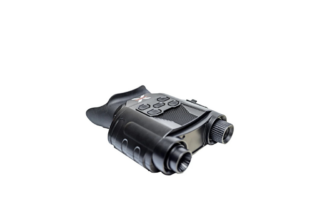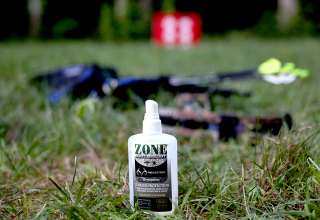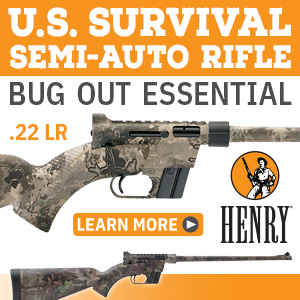 Long before the eastern coyote arrived into my native South Carolina in any huntable numbers, I was calling in and killing predators and varmints. I still remember, vividly, sitting along a creek bank overlooking an overgrown pasture and seeing a grey fox trot into my calling sequence. That one hunt hooked me on calling critters. Ever since then, I have spent an inordinate amount of time calling all kinds of animals to game calls.
Long before the eastern coyote arrived into my native South Carolina in any huntable numbers, I was calling in and killing predators and varmints. I still remember, vividly, sitting along a creek bank overlooking an overgrown pasture and seeing a grey fox trot into my calling sequence. That one hunt hooked me on calling critters. Ever since then, I have spent an inordinate amount of time calling all kinds of animals to game calls.
Red fox, grey fox, coyote, bobcats, crows and, most recently, raccoons have all succumbed to the calling. [NOTE: Check your local game laws before using electronic calls for hunting animals in your state.] In my home state of South Carolina, we can use electronic game calls for coyotes and crows, but if a fox responds to the call, we cannot legally kill him. The same is true of bobcats. Only coyotes and crows can be hunted with electronic calls. However, many states do allow the use of electronic calls for predators and furbearers.
 Recently, I was asked by a farmer to help him get rid of some nuisance crows on his farm. The excitement of a good crow hunt rivals that of a good duck hunt, and the techniques are similar with a few exceptions. Hunting crows does not involve getting out into ice-covered water to have a great hunt. My brother, Dondi Rogers of Saluda, SC, has been chasing crows for a long time, and as he puts it, “This is the most fun and frustrating wing shooting I have ever done.” If you do any online search of the most intelligent animals in the world, you will find crows on every top ten list. These birds are so intelligent – calling and decoying them can be a real challenge.
Recently, I was asked by a farmer to help him get rid of some nuisance crows on his farm. The excitement of a good crow hunt rivals that of a good duck hunt, and the techniques are similar with a few exceptions. Hunting crows does not involve getting out into ice-covered water to have a great hunt. My brother, Dondi Rogers of Saluda, SC, has been chasing crows for a long time, and as he puts it, “This is the most fun and frustrating wing shooting I have ever done.” If you do any online search of the most intelligent animals in the world, you will find crows on every top ten list. These birds are so intelligent – calling and decoying them can be a real challenge.
 To increase your odds, it helps to know where the crows are roosting and what their fly way is to have a lot of success. “To kill the most birds, you need to set up along their flyway,” Rogers says. “Crows will roost in the same area, and fly to a food source daily, feed a while and then return to their roost area. Setting up along the flyway will help to get the birds to commit.”
To increase your odds, it helps to know where the crows are roosting and what their fly way is to have a lot of success. “To kill the most birds, you need to set up along their flyway,” Rogers says. “Crows will roost in the same area, and fly to a food source daily, feed a while and then return to their roost area. Setting up along the flyway will help to get the birds to commit.”
“I like to set up about a half dozen decoys in a clearing to get started,” Rogers says. It also pays to place a decoy on a limb or branch ten to fifteen feet above the ground. This is the sentry, the crow that is guarding the rest of the flock. “Crows have excellent eyesight and getting in a blind or hiding well is crucial. If they see you at all, the game is up.” Full camouflage is essential, including face covering. These birds are coming to a call and looking for a reason to come in. They will come and commit rather quickly, but they will flare just as quickly. One major advantage we have is that crows are not considered game animals, so the use of electronic calls is allowed. The Western Rivers Mantis Pro is the perfect choice for calling crows. The small and compact call comes with 400 preloaded calls, but more can be added via the SD card slot, which is included. One feature I love about the Mantis Pro is the Bluetooth capabilities that enable me to stream sounds from my smart phone if I choose.
We began our morning hunt by setting up the decoys and getting us well hidden into the brush. Placing the Mantis Pro 400 electronic call in the middle of the decoy spread, we are able to bring the birds directly into the spread. The speaker roared a crow frenzy announcing to every crow within a few miles that something was going on that needed their attention. Within two minutes, three crows emerged from above the mature oaks. Two fell dead and the third escaped. As the frenzy continued, a half dozen crows came and, again, shots rang out and crows fell to the ground. This time, we changed our calling to a wounded crow sound. At this, the hesitant crows in the distance committed and came in to the decoys. After about twenty minutes, we picked up fourteen crows along with our decoys and headed to another section of the property to repeat the process.
 A few years ago, while visiting a friend in the Midwest, he turned me onto more exciting, action-packed fun calling critters – raccoons. I must say, if you have never called raccoons during the daylight, you are missing some exciting fun. [NOTE: Check your local game laws before using game calls for raccoons.] The tactic is similar to calling other animals, with one major exception. Raccoons are largely nocturnal animals. It helps to locate some possible den trees (large trees with hollows where raccoons sleep and spend most of the daylight). Locate den trees, back up forty to fifty yards and set your caller about twenty yards from the trees. Good sounds include “raccoon fight” and “baby raccoon in distress.” Play them loud and watch the den trees. Once you get their attention, lower the volume, and the raccoons will peek out of the den hole. After a few minutes, they will crawl out and move either to a better vantage point, or when it’s good, they will jump out and charge the caller.
A few years ago, while visiting a friend in the Midwest, he turned me onto more exciting, action-packed fun calling critters – raccoons. I must say, if you have never called raccoons during the daylight, you are missing some exciting fun. [NOTE: Check your local game laws before using game calls for raccoons.] The tactic is similar to calling other animals, with one major exception. Raccoons are largely nocturnal animals. It helps to locate some possible den trees (large trees with hollows where raccoons sleep and spend most of the daylight). Locate den trees, back up forty to fifty yards and set your caller about twenty yards from the trees. Good sounds include “raccoon fight” and “baby raccoon in distress.” Play them loud and watch the den trees. Once you get their attention, lower the volume, and the raccoons will peek out of the den hole. After a few minutes, they will crawl out and move either to a better vantage point, or when it’s good, they will jump out and charge the caller.
The exciting thing about calling raccoons is that you can move a few hundred yards and do it all over again with more and more excitement.
 Calling animals is a great way to introduce new hunters to the sport we love. The excitement of seeing a murder of crows swarming overhead or a raccoon charging your blind is addicting and just plain fun. Thankfully, Western Rivers Mantis Pro has the calls and the ability to help you get the job done.
Calling animals is a great way to introduce new hunters to the sport we love. The excitement of seeing a murder of crows swarming overhead or a raccoon charging your blind is addicting and just plain fun. Thankfully, Western Rivers Mantis Pro has the calls and the ability to help you get the job done.


















